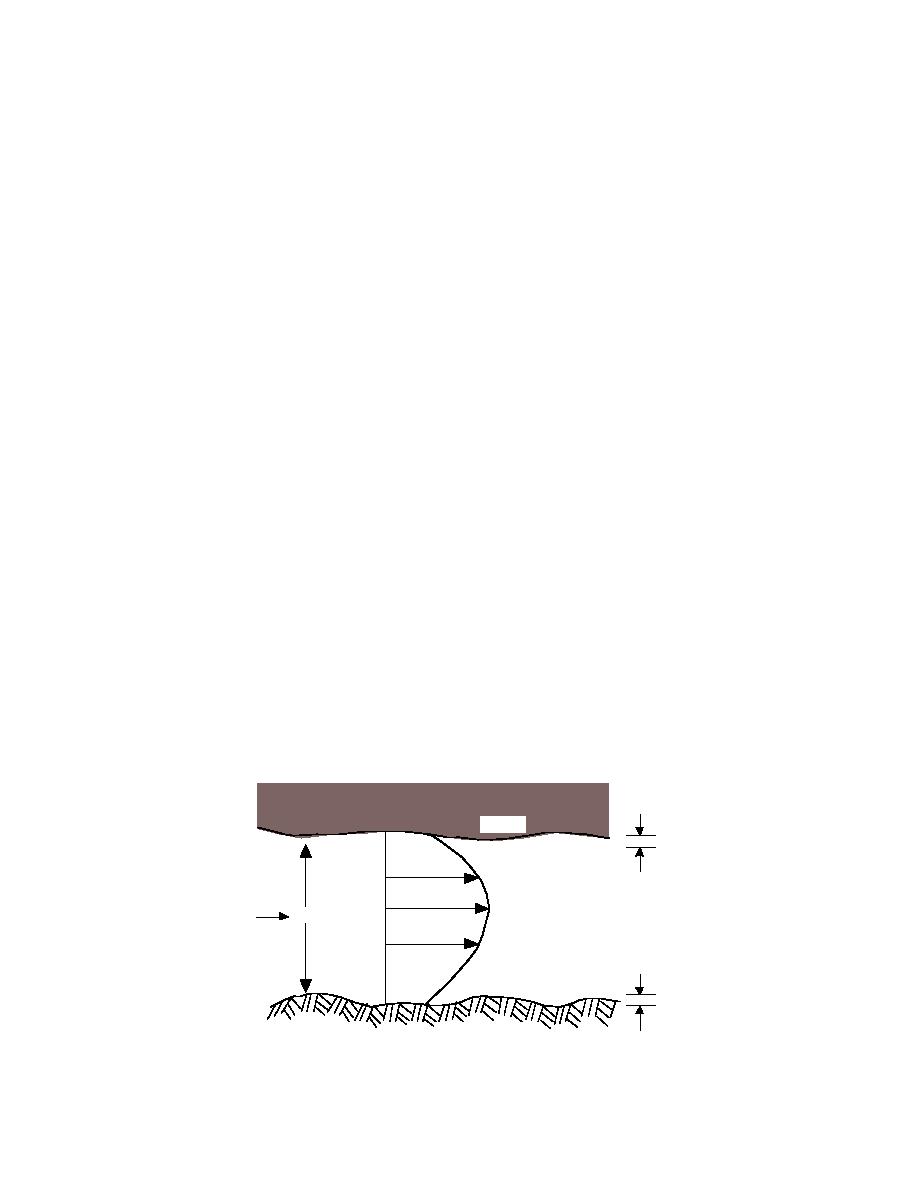
surface of the ice over time and as the ice cover
ICE PROPERTIES USED IN HYDRAULIC
thickens--effects noted by many observers--can
MODELS OF ICE JAMS
be a source of error in estimates of roughness,
The properties of ice jams included in the mod-
which is often taken as constant over time. Al-
els cited above include ice cover roughness, cohe-
though it has been argued by some that excessive
sion, measures of internal strength such as inter-
reliance is placed on this single work by
nal friction angle and the angles of static and
Nezhikhovskiy, a careful review of this work in-
dynamic friction, the shear force on the ice cover
dicates that both the method and the number of
and its shear strength, and frazil particle diameter
samples utilized by Nezhikhovskiy inspire confi-
and fall velocity. Each of these is addressed in a
dence. Rather, it is the incorrect application of re-
separate section below, followed by discussions
sults clearly intended by Nezhikhovskiy for use
of ice transport, thermal effects on ice jams, and
during initial ice cover formation due to frazil or
miscellaneous hydraulic properties of ice jams
sheet ice accumulation or frazil deposition only,
such as porosity, anchor ice growth, jam erosion,
to other situations, particularly breakup jams, that
engenders difficulty in roughness estimation.
ice cover breakup and movement, thermal effects,
Roughness is approached in several ways and
coefficient of ice loss, and permeability.
using several coefficients. Roughness is almost
always determined using a two-layer system, that
Ice cover roughness (ni)
Ice cover roughness is the most thoroughly ex-
is, dividing the flow area into separate layers af-
plored hydraulic property of ice covers. In fact,
fected by the bed and the ice cover (Fig. 5). A com-
the biennial River Ice Workshops sponsored by the
posite channel roughness coefficient is calculated
Canadian government (see, e.g., Ismail 1997), be-
through application of standard flow equations
gan as a workshop on the hydraulic resistance of
such as Manning's equation or the Darcy-
river ice in 1980 largely devoted to developing an
Weisbach equation (numerous researchers) or
understanding of ice cover roughness (Tsang and
boundary-layer theory (e.g., Gogus and Tatinclaux
Beltaos 1980). Yet there is still a need to obtain re-
1981). Given an estimate of bed roughness, the
liable field measurements of ice jams roughness.
roughness of the underside of the ice can then be
calculated using a formula such as the Belokon-
A review of formulas for computing composite
roughness coefficients as well as a discussion of
Sabaneev formula (eq 11). Roughness has also been
roughness estimates made by others (Lotter 1932,
calculated from estimates of the shear stress on
1941; Belokon 1938, 1940; Panov 1960) is included
the underside of the ice cover (e.g., Knowles and
in Nezhikhovskiy (1964). He suggests that many
Hodgins 1980, Hara et al. 1997). Unfortunately, few
published values of ni and nc are incorrect due to
data useful in calculating roughness exist, particu-
errors in measured and estimated discharge and
larly for breakup jams. Also, the presence of an
water slope. Also, the smoothing of the bottom
ice jam can cause changes in bed roughness, which
Ice
ni,, cii, fi
ni c
kii
viV
i
τiτi =ττb =oo
= b=
vma
Vmaxx
y
v
vV
b
b
kb
k
b
nb , cb,, ffbb
nb
Bed
Figure 5. Variables important in flow beneath an ice cover.
8



 Previous Page
Previous Page
